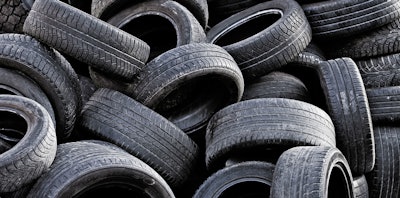
A study by Harvard University engineers details a new rubber material that essentially heals itself when ripped or punctured.
The research, published in the journal Advanced Materials, suggests that the rubber could one day be used in medical devices, wearable electronics or even vehicle tires.
Harvard's School of Engineering and Applied Sciences previously produced hydrogels that use water to create reversible bonds between its molecules, but dry materials such as rubber require permanent molecular bonds that generally will not combine with reversible bonds.
“Previous research used reversible hydrogen bonds to connect polymers to form a rubber, but reversible bonds are intrinsically weaker than covalent bonds,” said postdoctoral fellow Li-Heng Cai. "This raised the question, can we make something tough but can still self-heal?”
The researchers described a "molecular rope" that they used to link permanent and reversible bonds together in the material. The resulting transparent rubber, when stretched, developed small cracks but remained connected by fibrous strands.
Those strands helped redistribute the stress, and once released, the bonds snapped back into place.
Although the material's use in commercial applications remains a ways off, scientists also expressed excitement about the potential to develop a wide range of polymers with self-healing capabilities.
"For engineering, the applications of the hybrid rubber that take advantage of its exceptional combination of optical transparency, toughness and self-healing ability remain to be explored," said Harvard physicist David Weitz.






















